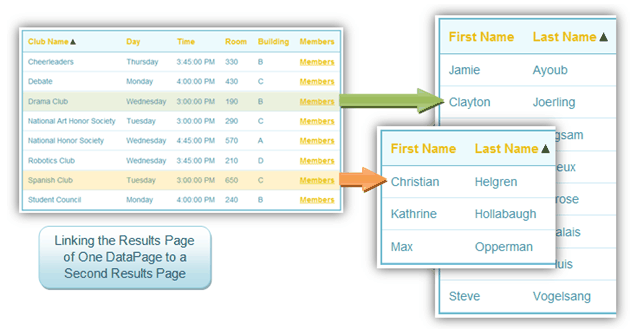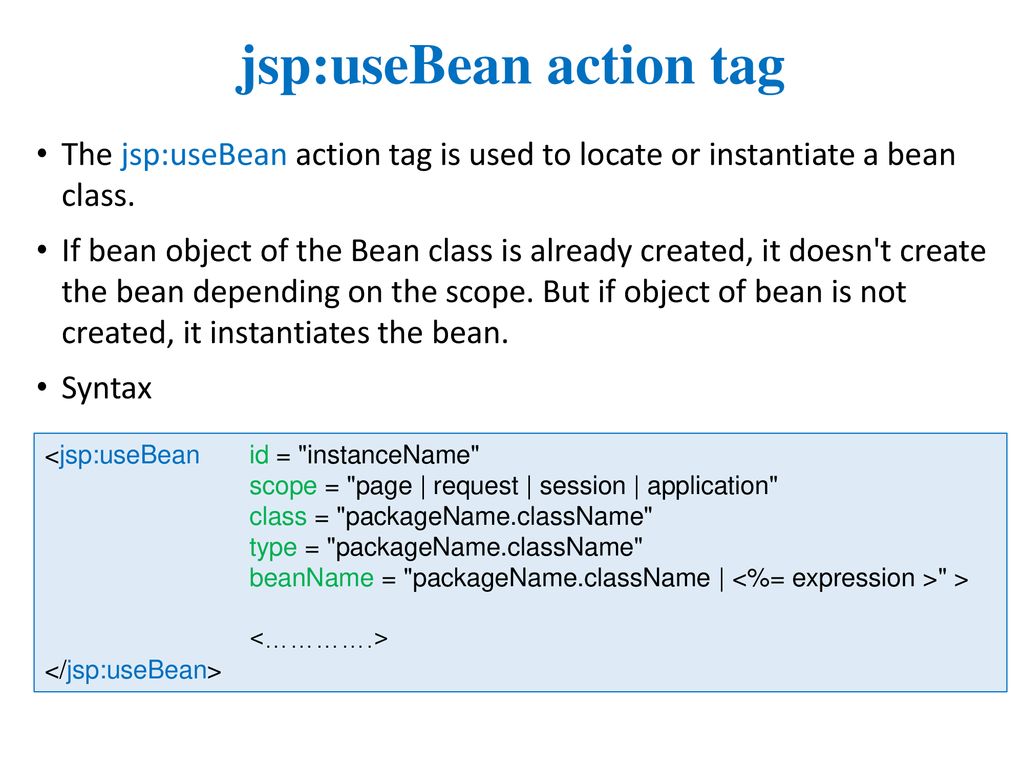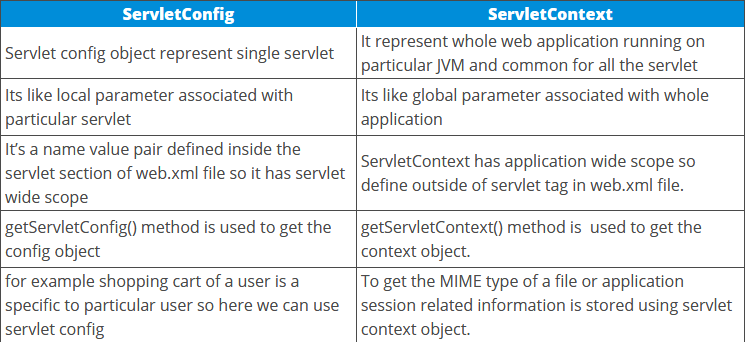
The JavaServer Pages (JSP) is a Java normal technology that allows you to write lively, data-driven pages for your Java web applications. The JSP is built on top of the Java Servlet specification. The two technologies typically work together, especially in older Java web applications. After a coding viewpoint, the most obvious difference between them is that with servlets you write Java code and then implant client-side markup (like HTML) into that code, while with JSP you start with the client-side script or markup, then embed JSP tags to connect your page to the Java backend.

The JSP is also closely related to JSF (JavaServer Faces), a Java specification for building MVC (model-view-controller) web applications. The JSP is a relatively simpler and older technology than JSF, which is the standard for Java web frameworks like Eclipse Mojarra, MyFaces, and PrimeFaces. While it is not rare to see JSP used as the frontend for older JSF applications, Facelets is the favored view technology for modern JSF applications.
Interview questions for JSP:-
Q1. Differentiate between Include Directive and Include Action.
Ans: The Difference between both can be explained as follows:
| Include Directive | Include Action |
| Includes content at page translation time | Includes content at page request time |
| Preferred in Static Pages | Preferred in Dynamic Pages |
| Includes Original content of the page | Does not include Original content of the page |
| Cannot invoke include() method | Can invoke include() method |
| Page size can be increased in the run-time | Page size is fixed |
Q2. What is JSP?
Ans: JSP is an abbreviation for Java Servlet Page. It is a Server-Side Programming Language used to create dynamic web-pages in the form of HTML. The JSP page is implicitly converted into a servlet and it enables some additional features such as Expression Language, Custom Tags, and many more.
Q3. How can you include the results of another page?

Ans: The results of another page can be included by using the following methods:
Include Directive
Include Action
Q5. How can I use JSP in the MVC model?
Ans: JSP is used in MVC in the presentation tasks. It is used as a view. The controller calls the model and the business classes that get the data. This data is rendered to the JSP for rendering it to the Client.
Q6. What do you mean by Context Initialization Parameters?
Ans: Context Initialization Parameters are the Initializing Parameters for the whole application. They are not specific to any Servlet or a JSP. Context Initialization Parameters are specified using the following syntax in a web.xml file.
<context-param>
<param-name>parametername</param-name>
<param-value>parametervalue</param-value>
</context-param>
Q7. Mention the scope values for <jsp.useBean> tag.

Ans: There are mainly four scope values available for <jsp.useBean> tag.
page
request
application
session
Q8. What are the Literals used in JSP?
Ans: The Literals used in JSP are as follows:
Null
Boolean
String
Integer
Float
Q9. What is the major difference between ServletContext and PageContext?

Ans: The major difference between ServletContect and PageContext is, the ServletContext is designed to provide information about the Container and on the other hand, the PageContext is designed to provide information about the Request.
Q10. Why are the request.getRequestDispatcher() and context.getRequestDispatcher() used?
Ans: The RequestDispatcher() and the context.getRequestDispatcher() are used for the following purposes.
request.getRequestDispatcher() is used to create request. We need to give the relative path of the resource.
context.getRequestDispatcher() is used to create context. We need to give the absolute path of the resource.
Q12. How are Custom Tags in JSP created?
Ans: Custom Tags in JSP are created using the following steps.
Creating the Tag Handler Class
Creating the TLD File
Creating the JSP File
Creating the Tag Handler Class:
To create a Tag Handler Class, we need to inherit the TagSupport Class and then override doStartTag() method. To write the data for JSP, we need to use the JspWriter class. The PageContext class provides getOut() method which returns the instance of the JspWriter class. Later, the TagSupport class provides an instance of pageContext by default.
Creating the TLD File:
TLD stands for Tag Library Descriptor file. It contains the information related to the tag and Tag Hander classes. It must be held inside the WEB-INF directory.
Creating the JSP File:
We will be specifying the path of the TLD file directly. It is recommended to use the URI name instead of full a path of the TLD file. It uses taglib directive to use the tags defined in the TLD file.
Q14. Mention the three important tags used in the development of JSP Bean.
Ans: The Three tags used in the JSP Bean development are as follows:
jsp:useBean
jsp:setProperty
jsp:getProperty
Q15. Can you disable the caching on the back button of a particular browser?
Ans: Yes, The Caching process can be disabled on the back button of the browser. To do so, we can use the following code below.
1
<% response.setHeader("Cache-Control","no-store"); response.setHeader("Pragma","no-cache"); response.setHeader ("Expires", "0"); %>
Q16. Mention the Implicit Objects in a JSP.
Ans: The Web Container creates certain objects that include the information related to a particular Request, Application or a Page. These Objects are called as Implicit Objects. The Implicit Objects in the JSP are as follows:
Course Curriculum
Java Certification Training Course
Instructor-led SessionsReal-life Case StudiesAssignmentsLifetime Access
Request
Response
Application
Exception
Config
Page
Session
PageContext
Out
Q17. Can you stop Multiple Submits to a Web Page that are initiated by clicking to refresh button?
Ans: Yes, This issue can be solved by using a Post/Redirect/Get or a PRG pattern.
A form filed by the user gets submitted to the server using POST/GET method.
The state in the database and business model are updated.
A redirect response is used to reply by the servlet for a view page.
A view is loaded by the browser using the GET command and no user data is sent.
This is safe from multiple submits as it is a separate JSP page.
Q18. How to include static files in a JSP?
Ans: Static pages can be included in a JSP using the include directive. This way the inclusion is performed in the translation phase once. Note that a relative URL must be supplied for file attribute. Although static resources may be included, it is not preferred as each request requires inclusion.
Q19. How can we stop errors on Display in a JSP Page?
Ans: We can stop errors in display in a JSP Page by setting up an “ErrorPage” attribute of the PAGE directory to the name of the error page in the JSP page, and then in the error JSP page set “isErrorpage=”TRUE”.
Q20. Can a Constructor be used in place of init() method to initialize a servlet?
Ans: Yes, We can use a constructor in place of init() method. But it is not preferred because init() was developed because earlier Java versions could not invoke constructors with arguments dynamically. So they could not assign a servletConfig. However, servlet containers still call an only no-arg constructor. So there is no access to servletContext or servletConfig.
Q21.What are the different Life-Cycle methods?
Ans: The different Life-Cycle Methods are as follows:
jspInit()
_jspService()
jspDestroy
jspInit(): Container calls jspInit() method to initialize servlet instance. It is called once for the servlet instance and preceded every other method.
_jspService(): Container calls _jspService() method for each request and passes it on to the objects.
jspDestry(): Container calls the jspDestroy() just before destruction of the instance.
Q22. What are the attributes on page directives?
Ans: The different attributes of the Page Directives are as follows;
Session: It is designed to show if any session data is available to the page or not.
Import: It is dedicated show packages that are imported.
isELIgnored: It shows whether EL expressions are ignored when JSP transforms into a servlet.
contentType: It allows the user to specify the content-type of the page.
Q23. Explain Client-Side and Server-Side Validation.
Ans: The Client-Side validation is done using JavaScript. The validation takes place within the browser. Javascript is used to submit the data in the form when the validation is successful. Validation errors do not require any extra network trip because the form cannot be submitted if there are any errors.
Similar kind of data validation is carried out in the Server-Side after submission of the form. In if the validation fails, then, the extra network trip is required to resend the form to the client to refill the form with the correct data.
Q24. Explain Translation Phase.
Ans: During the Translation Phase, the JSP engine translates and compiles a JSP file into a servlet. This servlet moves to the execution phase where all the requests and responses are handled. They are compiled for the first time. They are not accessed unless they are manually compiled. The manual/explicit compilation is useful for long and convoluted programs.
Q25. What is Object Cloning?
Ans: The object cloning is a process of creating an exact copy of the existing object. The clone() method of Object class is used to create the clone an existing object. The class, whose object the user tries to clone is expected to implement the java.lang.Cloneable interface. If it does not implement the Cloneable interface, then the clone() method generates the CloneNotSupportedException.
1
protected Object clone() throws CloneNotSupportedException
Q26. Write a simple example for the Clone() Method.
Ans: The code is a simple example for the Clone() Method.
class Student18 implements Cloneable{
int rollno;
String name;
Student18(int rollno,String name){
this.rollno=rollno;
this.name=name;
}
public Object clone()throws CloneNotSupportedException{
return super.clone();
}
public static void main(String args[]){
try{
Student18 s1=new Student18(101102,"Arjun");
Student18 s2=(Student18)s1.clone();
System.out.println(s1.rollno+" "+s1.name);
System.out.println(s2.rollno+" "+s2.name);
}
catch(CloneNotSupportedException c){
}
}
}
//Output:
101102 Arjun
101102 Arjun
Q27. Define JSP Declaration.
Ans: The JSP declaration tag is used to declare fields and methods. The code written inside the JSP declaration is enclosed in <%!%> tag. It is placed outside the service() method of the auto-generated servlet.
Syntax:
<%! field or method declaration %>
Example:
<html>
<body>
<%! int data=50; %>
<%= "Value of the variable is:"+data %>
</body>
</html>
How are JSP(Java Server Pages) better than ASP(Active Server Pages)?
Ans: The advantages of JSP over ASP are as follows:
The dynamic part of the code is written in Java, not in Visual Basic or the Microsoft-specific language. Hence, it is powerful and easier to use.
It is portable to other operating systems and Non-Microsoft Web servers.
30. Mention the advantages of JSP over Pure Servlets?
Ans: Some of the Major Advantages of JSP over Pure Servlets are as discussed below:
It is more convenient to write and modify normal HTML than to have plenty of println statements that generate the HTML.
Embedding of Java code in HTML pages.
Platform independence.
Creation of database-driven Web applications.
Server-side programming capabilities.
Q31. What is Auto-Flush Attribute?
Ans: The autoFlush attribute is used to specify if a buffered output should be flushed automatically when the buffer is filled, or whether an exception should be raised to indicate buffer overflow. A value of true by default indicates automatic buffer flushing and a value of false throws an exception.
Q32. What do you mean by isScriptingEnabled Attribute?
Ans: isScriptingEnabled attribute determines if scripting elements are allowed for use or not. The default value is true and it enables scriptlets, expressions, and declarations. If the attribute’s value is set to false, a translation-time error will be raised if the JSP uses any scriptlets, expressions/declarations.
Q33. What are the steps involved in reading data from a form using JSP?
Ans: The data parsing is a JSP is Automatic. It is done through the following steps depending on the situation.
getParameter(): request.getParameter() method is called to get the value of the form parameter.
getParameterValues(): This method is called if the parameter appears more than once and returns multiple values.
getParameterNames(): This method is called if the user wants a complete list of all parameters in the current request.
getInputStream(): This method is used to read binary data stream coming from the client.
Q34. How are cookies set in JSP?
Ans: Setting cookies with JSP involves the following steps:
Creating a Cookie object: Cookie constructor is called with a cookie name and a cookie value, both are strings.
Setting the maximum age: setMaxAge is used to specify the length of the cookie(in seconds) should be valid.
Sending the cookie into the HTTP response headers: response.addCookie is used to add cookies in the HTTP response header.
Q35. How do you delete the Session Data?
Ans: Deleting the Session Data involves the following steps.
Remove a particular attribute: public void removeAttribute(String name) method is called to delete the value associated with the particular key.
Delete the whole session: public void invalidate() method is called to discard an entire session.
Setting the Session timeout: public void setMaxInactiveInterval(int interval) method is called to set the timeout for a session individually.
Log the user out: The logout is called to log the client out of the Web server and invalidate all sessions belonging to all the users.
web.xml Configuration: In Tomcat, using the above-mentioned methods, one can configure session time out in web.xml file as follows.
Q36. How to delete a Cookie in JSP?
Ans: The following code snippet is followed to delete a cookie in JSP.
Cookie mycookie = new Cookie("name","value");
response.addCookie(mycookie);
Cookie killcookie = new Cookie("mycookie","value");
killcookie . set MaxAge ( 0 );
killcookie . set Path (" / ");
killcookie . addCookie ( killcookie 1 );
Q37. Explain the difference between forward and sendRedirect?
Ans: When a forward request is called, the request is sent to a different resource on the server, without the client being informed that a different resource is going to process the request. This process occurs completely with in the web container.
When a sendRedirtect method is invoked, it causes the web container to return to the browser indicating that a new URL should be requested. Since the browser issues a completely new request any objects that are stored as request attributes before the redirect occurs will be lost. This extra round trip a redirect is slower than forward.
Q38. Mention the JSTL core tags.
Ans: JSTL core tags are as follows.
<c:out> tag: It is used for displaying the content on client after escaping XML and HTML markup tags. Main attributes are default and escapeXML.
<c:set> tag: This tag is useful for setting up a variable value in a specified scope. It basically evaluates an expression and sets the result in the given variable.
<c:remove> tag: It is used for removing an attribute from a specified scope or from all scopes (page, request, session and application. By default removes from all.
<c: if> tag: This JSTL core tag is used for testing conditions. There are two other optional attributes for this tag which are var and scope, the test is mandatory.
<c:choose> tag: It’s like switch statement in Java.
<c:when> tag: It’s like case statement in Java.
<c:otherwise> tag: It works like default attribute in switch-case statements.
<c:catch>tag: This tag is used in exception handling. In this post, we have discussed exception handling using <c:catch> core tag.
<c:import> tag: This JSTL core tag is used for importing the content from another file/page to the current JSP page. Attributes – var, URL and scope.
<c:forEach> tag: This tag in JSTL is used for executing the same set of statements for a finite number of times.
<c:forTokens> tag: It is used for iteration but it only works with the delimiter.
<c:param> tag: This JSTL tag is mostly used with <c:url> and <c:redirect> tags. It adds parameter and their values to the output of these tags.
<c:url> tag: It is used for URL formatting or URL encoding. It converts a relative URL into an application context’s URL. Optional attributes var, context and scope.
<c:redirect> tag: It is used for redirecting the current page to another URL, provide the relative address in the URL attribute of this tag and the page will be redirected to the URL.
Q39. Why are JSP pages preferred for creating web-based client program?
Ans: JSP is preferred for creating web-based client program. Because no plug-ins/security policy files are needed on the client systems whereas applet does. Also, JSP pages enable cleaner and more module application design because they provide a way to separate applications programming from web page design. This means personnel involved in web page design do not need to understand Java programming language syntax to do their jobs.
Q40. How can you make the Finally Clause not to fail to execute?
Ans: It is possible to make the Finally Clause to not to fail by using System.exit(1); in the try block.
Q41. How can we retrieve Warnings?
Ans: SQLWarning objects are a subclass of SQLException that deal with database access warnings. Warnings do not stop the execution of an application, as exceptions do; they simply alert the user that something did not happen as planned. A warning can be reported on a Connection object, a Statement object including PreparedStatement and CallableStatement objects, or a ResultSet object. Each of these classes has a getWarnings method, which you must invoke in order to see the first warning reported on the calling object.
The following code snippet can be used to retrieve Warnings.
SQLWarning warning = stmt.getWarnings();
if (warning != null){
while (warning != null){
System.out.println(\"Message: \" + warning.getMessage());
System.out.println(\"SQLState: \" + warning.getSQLState());
System.out.print(\"Vendor error code: \");
System.out.println(warning.getErrorCode());
warning = warning.getNextWarning();
}
}
Q42. Why Does Jcomponent have Add() And Remove() methods but the component does not?
Ans: It is because, the JComponent is a subclass of Container, and it can contain other components and JComponents. You can make your JSPs thread-safe by having them implement the SingleThreadModel interface. This is done by adding the directive <%@ page isThreadSafe=”false” % > within your JSP page
Q43. Explain some JSP Life-Cycle methods that can be overridden.
Ans: You can override the jspInit() and jspDestroy() methods within a JSP page. It is good programming practice to free any allocated resources within jspDestroy(). The jspInit() and jspDestroy() methods are each executed just once during the lifecycle of a JSP page and are typically declared as JSP declarations:
Q44. How can I declare methods within my JSP page?
Ans: Methods can be declared for use within a JSP page. The methods are invoked within any other methods you declare, or within JSP scriptlets and expressions.
NOTE: Do note that you do not have direct access to any of the JSP implicit objects like request, response, session and so forth from within JSP methods. However, you should be able to pass any of the implicit JSP variables as parameters to the methods you declare.
Q45. How does a servlet communicate with a JSP page?
Ans: The following code snippet shows how a servlet instantiates a bean and initializes it with FORM data posted by a browser. The bean is then placed into the request, and the call is then forwarded to the JSP page, Bean1.jsp, by means of a request dispatcher for downstream processing.
public void doPost (HttpServletRequest request, HttpServletResponse response){
try {
govi.FormBean f = new govi.FormBean();
String id = request.getParameter("id");
f.setName(request.getParameter("name"));
f.setAddr(request.getParameter("addr"));
f.setAge(request.getParameter("age"));
f.setPersonalizationInfo(info);
request.setAttribute("fBean",f);
getServletConfig().getServletContext().getRequestDispatcher
("/jsp/Bean1.jsp").forward(request, response);
}
catch (Exception ex) {
}
}
The JSP page Bean1.jsp can then process fBean, a fter first extracting it from the default request scope via the useBean action.
jsp:useBean id="fBean" class="govi.FormBean" scope="request"/ jsp:getProperty name="fBean"
property="name" / jsp:getProperty name="fBean"
property="addr" / jsp:getProperty name="fBean" property="age" / jsp:getProperty name="fBean"
property="personalizationInfo" /
Q46. What is a Hidden Comment?
Ans: A comment that documents the JSP page but is not sent to the client is known as a Hidden comment. The JSP engine ignores a hidden comment and does not process any code within hidden comment tags. A hidden comment is not sent to the client, either in the displayed JSP page or the HTML page source. The hidden comment is useful when you want to hide or “comment out” part of your JSP page.
You can use any characters in the body of the comment except the closing –%> combination. If you need to use –%> in your comment, you can escape it by typing –%>.
JSP Syntax:
Course Curriculum
Java Certification Training Course
Weekday / Weekend Batches
1
<%-- comment --%>
Examples
<%@ page language="java" %>
<html>
<head><title>A Hidden Comment </title></head>
<body>
<%-- This comment will not be visible to the client in the page source --%>
</body>
</html>
Q47. Can you disable JSP Scripting?
Ans: Yes, Scripting is disabled by setting the scripting-invalid element of the deployment descriptor to true. It is a sub-element of JSP-property-group. Its valid values are true and false.
The syntax for disabling scripting is as follows:
<jsp-property-group>
<url-pattern>*.jsp</url-pattern>
<scripting-invalid>true</scripting-invalid>
</jsp-property-group>
Q48. How to deactivate EL on JSP?
Ans: There are two ways to ignore the execution of an (EL) Expression Language on a JSP page.
Use the directive <% @ page isELIgnored = “true”%>.
Configure web.xml (best suited to disable EL on multiple pages)
<jsp-config>
<jsp-property-group>
<url-pattern>*.jsp</url-pattern>
<el-ignored>true</el-ignored>
</jsp-property-group>
</jsp-config>
Q49. When does a container initialize multiple JSP objects?
Ans: In the case, where there are multiple servlets and servlet-mapping elements in the deployment descriptor for one servlet or JSP page, then the container initializes an object for each element and each of these objects has its own ServletConfig object and initialization parameters.
The following code snippet uses one JSP page in web.xml as shown below.
<servlet>
<servlet-name>Test</servlet-name>
<jsp-file>/WEB-INF/test.jsp</jsp-file>
<init-param>
<param-name>test</param-name>
<param-value>Test Value</param-value>
</init-param>
</servlet>
<servlet-mapping>
<servlet-name>Test</servlet-name>
<url-pattern>/Test.do</url-pattern>
</servlet-mapping>
<servlet>
<servlet-name>Test1</servlet-name>
<jsp-file>/WEB-INF/test.jsp</jsp-file>
</servlet>
<servlet-mapping>
<servlet-name>Test1</servlet-name>
<url-pattern>/Test1.do</url-pattern>
</servlet-mapping>
Q50. Give a sample JSP configuration in the deployment descriptor.
Ans: The JSP-config element is used to configure various parameters of JSP pages.
Management of scriptlet elements on the page,
Controlling the execution of expressions in a language
URL pattern definition for encoding,
Determining the size of the buffer that is used for objects on the page
Identification of resource groups corresponding to a URL pattern to be processed as an XML document.
jsp-config>
<taglib>
<taglib-uri>https://www.edureka.co/jsp/tlds/mytags</taglib-uri>
<taglib-location>/WEB-INF/numberformatter.tld</taglib-location>
</taglib>
</jsp-config>
I’m a DevOps/SRE/DevSecOps/Cloud Expert passionate about sharing knowledge and experiences. I am working at Cotocus. I blog tech insights at DevOps School, travel stories at Holiday Landmark, stock market tips at Stocks Mantra, health and fitness guidance at My Medic Plus, product reviews at I reviewed , and SEO strategies at Wizbrand.
Please find my social handles as below;
Rajesh Kumar Personal Website
Rajesh Kumar at YOUTUBE
Rajesh Kumar at INSTAGRAM
Rajesh Kumar at X
Rajesh Kumar at FACEBOOK
Rajesh Kumar at LINKEDIN
Rajesh Kumar at PINTEREST
Rajesh Kumar at QUORA
Rajesh Kumar at WIZBRAND

 Starting: 1st of Every Month
Starting: 1st of Every Month  +91 8409492687
+91 8409492687  Contact@DevOpsSchool.com
Contact@DevOpsSchool.com
